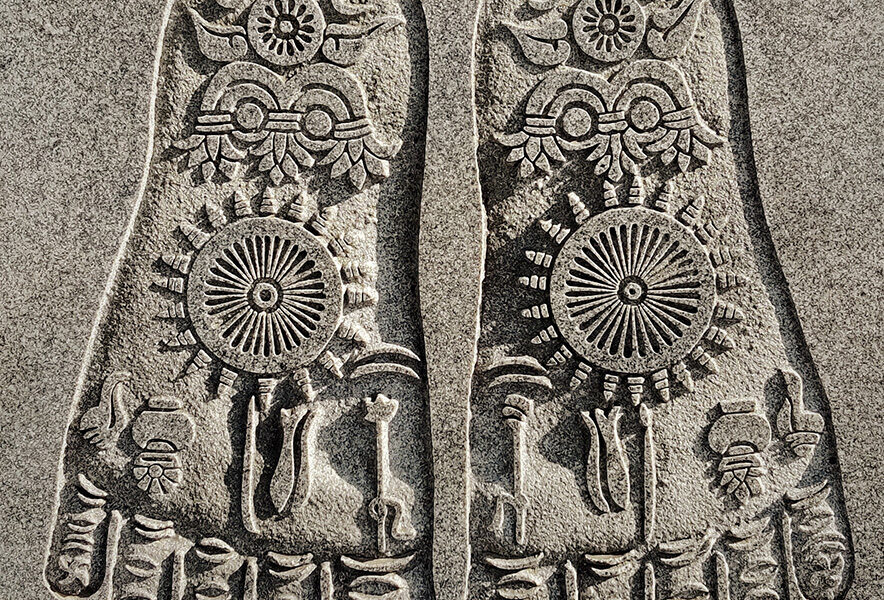- History of Senkoji Temple
- The “main hall” of Senkoji temple, which has remained since the Edo period, features a Jizo statue with only its head.
- Experience the world of hell and Buddhism at Senkoji Temple’s “Jigokudo” and “Hotoke no Kuni
- Access to Senkoji Temple
- Parking around Senkoji Temple
- Senkoji Temple Official Website
- Recommended around Senkoji Temple
History of Senkoji Temple
Senkoji Temple” is a temple of the Koyasan Shingon sect located in Hirano-ku, Osaka City.
Although the date of its foundation is not clear, it is believed that Prince Shotoku built Yakushido during the Asuka period (710-794).
Later, the town of Hirano developed around Yakushido, and after the Onin War in 1467, it flourished as a moat city (a city with a moat dug around the town) to avoid being caught up in warfare.
It is said that Tokugawa Hidetada’s (2nd Shogun’s) army took up position near Senkoji Temple during the “Osaka Winter Battle” in 1614 (the temple was caught up in the war during the “Osaka Summer Battle” the following year). In 1945, Osaka was bombed by the U.S. military (the Osaka Great Air Raid, which took place eight times, killing more than 10,000 civilians), but Senkoji Temple was not.
The “main hall” of Senkoji temple, which has remained since the Edo period, features a Jizo statue with only its head.
The main hall of Senkoji Temple was built in 1576, and although part of it was destroyed by fire during the Osaka Summer Battle, it was rebuilt in 1661 and remains to this day (one of the oldest wooden structures in Osaka Prefecture). The main statue, Yakushi Nyorai, is enshrined inside, and the temple is open only on January 8 and Mid-Autumn Jugoya (Fifteen Nights in Autumn).
In the main hall of the temple, there is also a Jizo statue with only its head, called “Kubi no Jizoson. The reason why only the head is enshrined is related to the legendary battle of Osaka between the Tokugawa and Toyotomi forces. During the battle, Nobushige Sanada (Yukimura), a general on the Toyotomi side, planted a landmine in the Jizo Hall where Ieyasu Tokugawa was resting in an attempt to assassinate him.
The mine exploded as Nobushige had intended, but Ieyasu was away from the Jizo Hall and was not caught in the explosion.
It is said that the Jizo hall was blown up by the explosion and only the head of the enshrined Jizo fell to the precincts of Zenko-ji Temple, about 300 meters away from the Jizo hall (Hirano Mine Fire).
This head Jizo is opened on August 23 and 24.
Experience the world of hell and Buddhism at Senkoji Temple’s “Jigokudo” and “Hotoke no Kuni
The most popular attractions at Senkoji Temple are the “Jigokudo” (Hell Hall) and “Hotoke no Kuni” (Land of the Spirits).
The “Jigokudo” was established in 1989, and inside are statues of King Yama and two-meter-long demons, creating a true “hell” of a world.
Here, visitors answer questions from King Enma and are told whether they will go to hell or paradise.
After the hell experience, you should definitely visit “Hotoke no Kuni”.
Inside, there are more than 160 Buddhist statues, including one of Kobo Daishi (founder of the Shingon sect of Buddhism), and a mandala with a stained glass design on the floor.
Visitors can sit on the mandala and meditate or otherwise pray.
Access to Senkoji Temple
4-12-21 Hiranohonmachi, Hirano-ku, Osaka 547-0044, Japan
Parking around Senkoji Temple
Senkoji Temple Official Website
Official site:https://www.senkouji.net/
